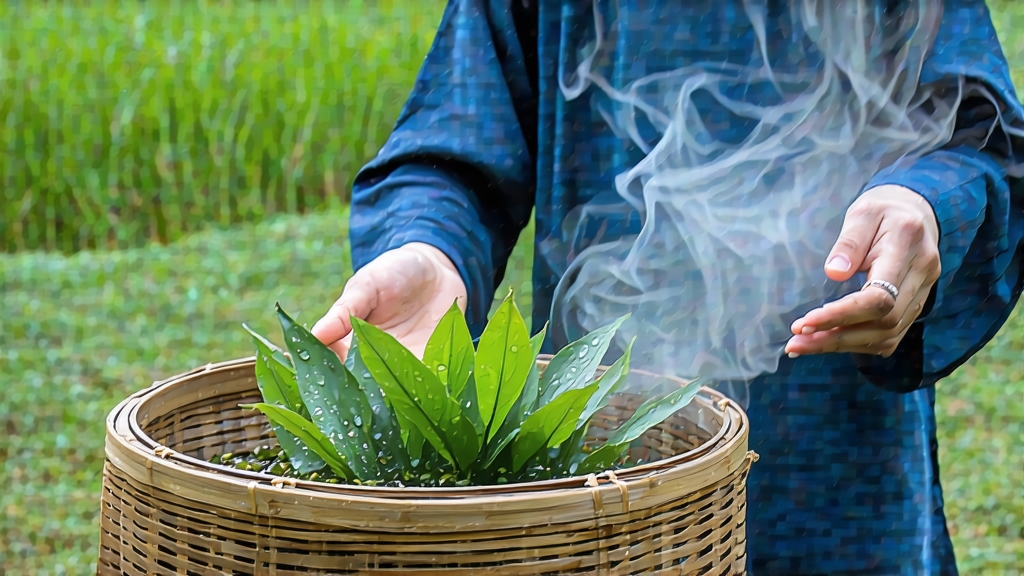
Longjing, literally “Dragon-Well,” is more than a green tea; it is a liquid postcard from the hills that cradle Hangzhou’s West Lake, a sip that has greeted emperors, poets, and now curious tea lovers on every continent. Its story begins in the Tang dynasty (618-907), when mountain monks first planted tea on the shale-rich slopes of Shifeng, Meijiawu, and Wengjiashan. A millennium later, the Qianlong Emperor (r. 1735-96) still traveled incognito to these same terraces, so enchanted by the tea that he reportedly pocketed a handful of leaves and enshrined the eighteen bushes outside Huguo Temple as imperial property—bushes that still survive, fenced but leafy, and auctioned annually for the price of a luxury car per 100 g.
Yet Longjing’s fame is rooted less in legend than in an unmistakable leaf: flat, jade-green, and smooth as a willow leaf ironed by an invisible hand. Of the many green teas China produces—perhaps 1,500 county-level varieties—only West Lake Longjing carries the EU-protected geographical indication, and only when it is picked within the 168 km² core zone, plucked before Qingming festival (around 5 April), and finished within 24 h of harvest. Outside this radius, even neighboring counties produce “Zhejiang Longjing,” pleasant but lacking the orchid fragrance and chestnut sweetness that misty lake air and quartz soil bestow.
The cultivar matters too. The traditional clone is Qunti, an open-pollinated shrub with small, slow-growing leaves that concentrate amino acids. In the 1980s agronomists released Longjing #43, a frost-resistant, earlier-sprouting variety whose slender leaves yield a brighter infusion but slightly less persistence on the palate. Purists still prefer Qunti for its yun—a Chinese tasting term roughly translated as “lingering echo”—yet both share the same finishing ritual that turns fresh leaf into national treasure.
Pan-firing, or shaqing, is the decisive step. Within minutes of picking, the leaves are tumble-dried in perforated bamboo drums to reduce surface moisture, then hand-pressed against a hot iron wok set at 80 °C, a temperature that would scorch spinach but coaxes tea enzymes into a gentle retirement. A master maker uses only his bare palms, calloused yet sensitive, flipping, clapping, and stroking the leaf for 12–15 min until it loses 30 % of its weight and acquires the signature flat sword shape. The wok’s temperature is then dropped to 60 °C for a second, 20-min “finalizing” round, followed by a cooling session on woven trays. No rolling, no steaming—just heat, hand, and timing. One kilogram of finished tea demands 60,000 pluck-tips, each picked as a single bud or bud-with-one-leaf standard, and a veteran craftsman can finish only 1.5 kg per day, which explains why pre-Qingming West Lake Longjing retails above USD 1,000 per 500 g.
To brew Longjing well is to respect its delicacy. Begin with still spring water low in calcium; hard water dulls the luminous jade liquor into murky olive. Heat the water to 80 °C—just when the first columns of steam rise like hesitant dragons. Use a tall, thin glass or a 150 ml gaiwan; glass reveals the “tea dance,” the slow vertical drift of leaves that sink, then rise again as they hydrate. A 1:50 leaf-to-water ratio (3 g to 150 ml) is standard, but the Hangzhou native’s rule is simpler: cover the bottom of the glass with a single loose layer. Infuse for 60 s, then sip without hurry. Second infusion at 45 s, third at 75 s; most top-grade lots yield four infusions before the sweetness fades. Do not cover the vessel—Longjing likes oxygen, and a lid traps vegetal notes that should evaporate.
Tasting begins with aroma: bring the empty, just-warmed glass to your nose; the dry leaf should recall toasted soybean and fresh magnolia. After the first pour, the liquor’s bouquet shifts toward steamed artichoke and wet slate. On the palate look for three waves: an initial, almost transparent sweetness at the tip of the tongue; a creamy body